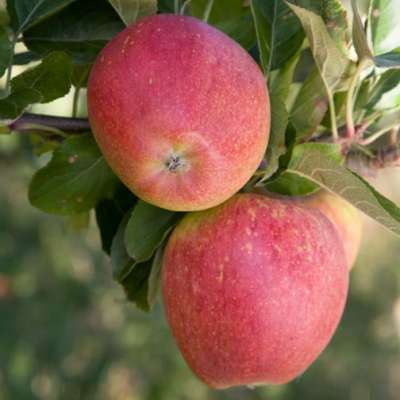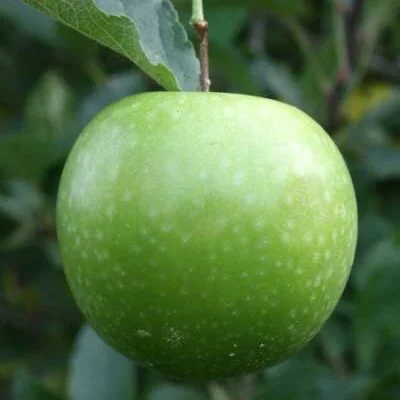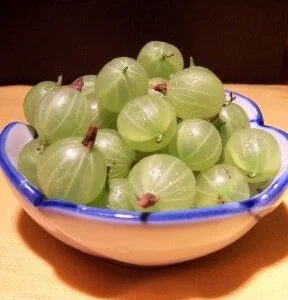Your basket is currently empty!
Soil Preparation
Tree fruits are long lived, so to achieve the best results it is important to prepare the ground before planting. The first essential is to remove all perennial weeds by forking out and burning. The soil should then be dug a full spade depth and broken up. It is beneficial at this time to add well rotted manure or compost etc. to the soil as this promotes healthy growth, about every 25 square feet should receive one barrow load on average. Light, hungry soils, more, and good fertile soils, less. Bonemeal at 2oz per square yard may be forked in at this time if required.
Planting
If, on arrival of the trees, the soil conditions are not suitable the trees should be heeled into a sheltered part of the garden. If this is not possible, keep the tree in an unheated, frost-free area and keep the roots moist with damp straw or a similar material until planting. Mark out the position for planting and drive in the stake which is to support your tree, this will normally be driven into the ground 18″ or deeper on very light soils. The top of the stake should be 2-3′ below the bottom branches of the tree after planting to avoid chafing. If the roots of the trees are at all dry, soak for 1 hour before planting. The next stage is the most important of all and must be correct to ensure the best results. A hole, deep and wide enough to take all of the roots of the tree when fully spread out, must first be dug. Dig into the base of the hole a bucket of compost, peat, well rotted manure or turf etc. and this will leave a slight mound in the centre of the hole. Place the tree on the mound with the stem approximately 24′ away from the stake you have previously driven in, ensuring that the lowest tree branches are clear of the top of the stake. Plant the tree to the same depth as it was when in the nursery, which can be seen by the soil mark on the tree. The scion where the tree is budded or grafted onto the rootstock should be at least 4″ above the soil surface after planting. Sprinkle the most fertile soil over the roots and occasionally shake the tree gently so that the soil falls among the roots. This process is continued until the hole is nearly full and the soil should then be firmed. Fill the remainder of the hole and firm again. Planting is now completed and the tree should be tied to the stake using a proprietary tree tie.
Mulching
The tree can be mulched after planting to improve conditions further, but be sure not to place the mulch next to the trunk of the tree as this can cause fungal disease. A gap of approximately 2″ should be left clear at the base. An 18″ area can be mulched to a depth of up to 3″ using well rotted compost, manure or peat etc.
Pruning
Most pruning of all trained trees is very simple, but read through the following carefully, study the tree, and the meaning will become clear. Once the object of pruning is understood the basic principles are clearly explained. The main objectives are to make sure that branches are well spread to allow in air and light to build the shape of tree you require and, in later years, to remove any dead or diseased wood. Pruning should be carried out in the winter months from November to February but preferably not when air temperatures are below freezing. The trained shapes known as bush, pyramid and cordons are the most convenient types for normal gardens, and these 3 are listed accordingly.
Pruning the Bush Tree
The best natural shape of a tree is a bush. The branches spread from a 2-3′ stem and are easy to pick from and prune.
First Winter
Immediately after planting, if the tree is a maiden the main stem should be cut just above a bud at approximately 3′ from the ground and any sideshoots cut back to just 2 or 3 buds from the main stem. These young side shoots are called feathers, any that are closer to the ground than 2′ should he removed.
Second Winter
Second Winter or after planting if the tree is 2 years old. There will now be 3 or 4 good wide angled shoots which will become the main branches. Cut each of these back to an outward facing bud, removing about half the length of the shoot.
Third Winter
All of the shoots pruned the previous winter should have grown a further 2 or 3 good shoots. These should be pruned to a well placed bud removing about a third of the new growth, any shoots that have developed and may cause overcrowding should be removed to maintain the bush shape of your tree. The main framework should now consist of about 8 main branches.
Pruning the Established Tree
Your tree is now established and will begin to fruit, from now on the pruning is much more flexible. It is simply a matter of removing any unwanted wood that is overcrowding your tree or restricting light and air to too great an extent. In general, the tips of the branches should not now be pruned unless a branch is growing in an undesirable direction. Every year some side shoots should be left unpruned to bear fruit, cutting out only those that fruited the previous year to a 2″ stump. You will by now be understanding the growth of your tree and the results of previous pruning and be in a position to cultivate your fruiting tree to provide your requirements.
Pruning the Dwarf Pyramid
The dwarf pyramid is the ideal easy way of growing apples and pears if room is restricted in the smaller garden or a very intensive system is required. Trees are planted just 5′ apart for M9 and 6′ apart for M26 and pears. If more than one row is required, the rows should be 6′ apart. As the name suggests the aim of pruning a dwarf pyramid is to have a central stem of about 7′ high and a total branch spread of about 4′, which tapers to the top to form a pyramid shape. This shape is achieve easily with a combination of winter and summer pruning. Do not grow pyramids against a wall, but in the open garden. After planting, the stems should be cut back to about 20″ from the ground and any side shoots cut to leave 4 or 5 buds, shorter if necessary. During the first summer, 4 or 5 strong shoots will he produced, no pruning is required at this time.
The Second Winter
Cut back the central leader to leave approximately 9″ of the new growth, ensuring that you prune at a bud that points in the opposite direction to the last pruning. This ensures that the central system will remain as straight and upright as possible. The side branches should now be pruned to a downward pointing bud to leave approximately 8″ of the new season’s growth.
The Following Summer
July to August: Leave all of the leaders unpruned but any laterals (the current season’s growth) that have grown from these should be pruned back to about 3 or 4″ or 3 leaves. Any that are immature leave and prune in September in the same way.
The Third Winter and Subsequent Pruning
Once again cut back the central leader to about 9″ ensuring you prune to a bud on the opposite side to the previous winter. Once the tree has reached the required height of about 7′ the leader should not be pruned in winter, but cut back to its origin in summer. If the growth is vigorous, this can be done in May and further shortened in August. Every summer the branch leaders should he pruned to approximately 5″ and all side laterals to 3 or 4 leaves. Any sub laterals (those growing from the side laterals) should be pruned to 2 leaves. From now the intention should be to retain the pyramid shape by close pruning and removal of any over vigorous shoots. Dwarf pyramids are easy to manage and all pruning is at a convenient height. The best restricted form for the smaller modem garden.
Cordons
Growing apples as cordons is ideal for the less experienced and the smaller garden and is probably the most productive of all growing systems. Cordons are in fruit the second season after planting and in heavy crop in 4 years. It is possible to grow a large range of varieties in a very small space to ensure excellent pollination and a full season long crop.
Planting and Support
Space the cordons 2′ 6″ apart when planting in rows 6’apart with the rows running north to south if possible but this is not essential. A wall or fence is suitable for growing cordons or they may be grown in the open garden on a wire fence. Drive in the posts to about 2’deep every 12″ to hold the support wires. These should be spaced 2′ 4″ and 6′ high using gauge 10 to 12 wire. Bamboo canes 8′ long should then be tied to the wires at an angle of 45° with the tops pointed towards the north if grown north/South or the east if grown east/west. Space the canes at one for each tree planted, when planting the trees should be planted 9″ away from the structure to allow room for trunk growth. Plant at an angle of 45° with the scion above ground and facing upwards. The trees should then be tied securely to the cane using thick, soft string or chain lock plastic ties.
Pruning
After planting cut the main stem to a bud removing about one third, this will often have been done at the nursery, prior to despatch. At planting it is easier to tie the bamboo cane to the support and then tie the stem of the tree to the bamboo cane.
The First Summer
As the main stem grows this should be tied to the supporting bamboo to keep it in a straight line, do not prune this main stem. In July and August prune the laterals which have grown at the base of each stem, count from this cluster and cut close to the selected leaves. It is easy to see when your cordon is ready for summer pruning, the side shoots have grown out to 9″ or more long, the leaves have become darker and lost their early brightness and the whole shoots have stiffened and begun to look more mature at the base and near the stem.
Following Winter Pruning
Each winter prune the new growth of the main stem as before until it has reached the required height at the top of the wires. Each year cut at a bud on opposite sides so that the main stem keeps growing as straight as possible. When the main stem has reached the top of the wire it should no longer be pruned in winter but cut back in summer to the required height.
Summer Pruning the Now established Tree
Every summer at the stage of growth previously described, all of the laterals that are growing from the main stem should be pruned to leave 3-4 leaves. Do not prune those less than 9″ long as these may have fruit buds. All sub laterals (shoots which grow from previous laterals) should he pruned back to 2 leaves. If secondary growth occurs in good growing seasons, prune back to one bud from your earlier summer pruning in September. All of this may sound drastic and complicated but it is not, it is essential and easy, so easy in fact that it has been known in large areas of professional trials to summer prune with hedging shears. We, ourselves, still prefer the traditional method!
Pruning Mini Trees on Rootstock M27
Prune as with the larger rootstocks except that pruning should not be quite so hard. Lightly pruning with most varieties is sufficient.
Pruning the Family Tree
Prune as you would a bush tree treating each variety separate;y to ensure an even balance of the different varieties.
General Care of Your Apples and Pears Feeding
Fertiliser should be applied as a top dressing over the rooting area which is normally the same as the spread of the tree.
Dessert Apples
Every year in late January or February, apply Sulphate of Potash at 3/4oz per square yard. Every 3 years also apply Super Phosphate at 2oz: per square yard and in late February, Sulphate of Ammonia (not if your soil is acid) or Nitro Chalk at 1 oz per square yard.
Cooking Apples
Exactly the same as dessert varieties, except that Sulphate of Ammonia or Nitro Chalk should be applied at 2oz per square yard.
Pears
Requirements are the same as cooking apples.
Watering
Water well during all drought periods, about 4 galls per square yard every 10 days. Larger and better quality fruits are produced by regular watering during July, August and September.
Picking
Apples
Lift the fruit in the palm of the hand and if it leaves the tree easily with the stalk intact the fruit is ready for picking. Another sign is the first windfalls, the skin of the fruit becomes brighter coloured.
Pears
Harder to assess than apples, but the colour of the skin often becomes paler. Lift the pear in the palm of the hand, twist slightly and tug. It should leave the tree with the stalk intact.
General Tips
The main difference between apples and pears is that the pear carries its fruit on spurs close to the main branches so more main branches can be left. With pears, aim to leave about 12 main branches whereas 8 main branches is more suitable for apples.






